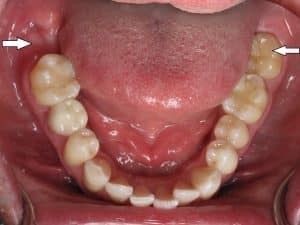
There is usually two present in each corner of the mouth. The premolar teeth are located between the canine and molar teeth. Canine teeth are the sharpest teeth and are used for tearing food apart. One canine tooth is located in each corner of the mouth. There are four canine teeth in the mouth. The teeth next to them are called the ‘lateral’ incisors. The two middle incisors are called the ‘central’ incisors. The incisors are the front four teeth located in both the top and bottom jaws. Sedimentology, 45, 71–89.There are four types of teeth found in the adult human mouth. Interstratal dewatering origin for polygonal patterns of sand-filled cracks: a case study of late Proterozoic metasediments of Islay, Scotland. ‘Molar-tooth microspar’: a chemical explanation for its disappearance ∼750 Ma.
MOLAR TOOTH SERIES
Science in China Series D: Earth Sciences, 51, 1525–1536. 1.7 Ga) in North China: implications for methane degassing from microbial mats. Sand veins and MISS from the Mesoproterozoic black shale (ca. Journal of Sedimentary Research, 70, 1246–1248. Molar-tooth carbonates: shallow subtidal facies of the mid- to late Proterozoic-Discussion. Oceanography, bathymetry and syndepositional tectonics of a Precambrian intracratonic basin: integrating sediments, storms, earthquakes and tsunamics in the Belt Supergroup (Helena Formation, ca. Journal of Sedimentary Research, 68, 1136–1140.
MOLAR TOOTH CRACK
Gas bubble and expansion crack origin of “molar-tooth” calcite structures in the middle Proterozoic Belt Supergroup, western Montana-Discussion. Geological Society of America Bulletin, 110, 1028–1045. Molar-tooth structure in Proterozoic carbonate rocks: origin from synsedimentary earthquakes, and implications for the nature and evolution of basins and marine sediment. Syneresis cracks: subaqueous shrinkage in argillaceous sediments caused by earthquake-induced dewatering. Journal of Sedimentary Petrology, 52, 323–327. Limestone response to stress: pressure solution and dolomitization-discussion and examples of compaction in carbonate sediments. Journal of Sedimentary Research, 76, 310–323. Morphology of molar-tooth structures in Precambrian carbonates: influence of substrate rheology and implications for diagenesis. The sedimentary features of Proterozoic microspar (molar-tooth) carbonates in China and their significance. CO 2-clathrate destabilization: a new model of formation for molar tooth structures. Chinese Journal of Geochemistry, 26, 28–34. A study on the environmental conditions of the microsparite (molar-tooth) carbonates. Chinese Journal of Geochemistry, 23, 334–341. Biomarkers in the molar tooth (MT)-bearing limestones in the Jilin–Liaoning area of China. Journal of Sedimentary Research, 68, 716–722. Molar-tooth carbonates: shallow subtidal facies of the mid- to late Proterozoic.

Journal of Sedimentary Research, 68, 104–114. Gas bubble and expansion crack origin of “molar-tooth” calcite structures in the middle Proterozoic Belt Supergroup, Western Montana. “Molar-tooth” structures: a geochemical perspective on a Proterozoic enigma. Possible seismic origin of molar tooth structures in Neoproterozoic carbonate ramp deposits, North China. Saskatchewan Geological Survey, Saskatchewan Ministry of Energy and Resources, Miscellaneous Report 2009-4.1, Paper A-3, p.

Synsedimentary deformation in laminated dolomites and evaporites of the Herald Formation (Red River Group): signature of Late Ordovician tectonic activity in southern Saskatchewan. Molar tooth structures of the Neoarchean Monteville Formation, Transvaal Supergroup, South Africa. I: constraints on microcrystalline CaCO 3 precipitation.


 0 kommentar(er)
0 kommentar(er)
